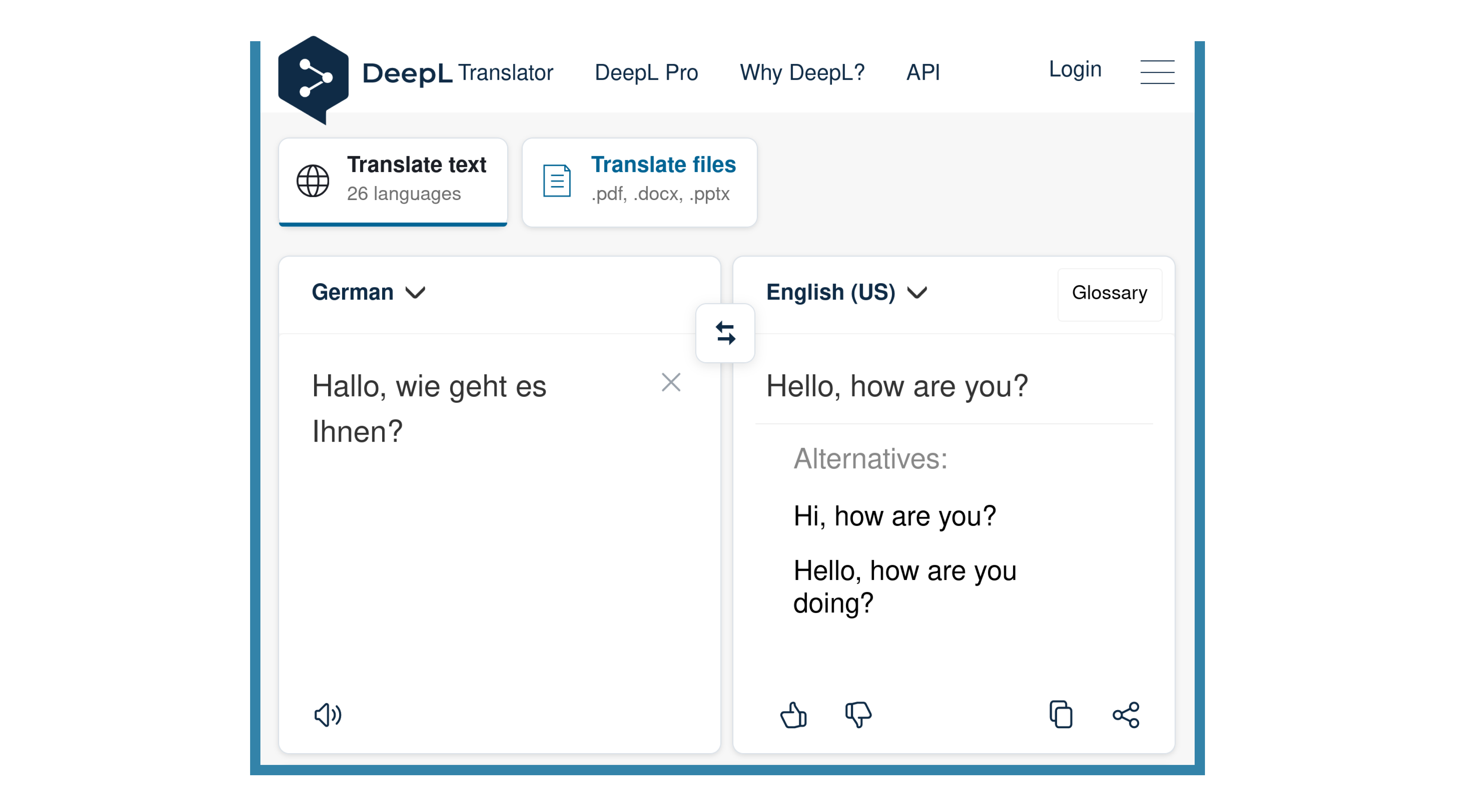
DeepL Pro/API: Complete Buyer's Guide
Neural machine translation solution for professional and enterprise use
DeepL Pro/API represents a translation technology vendor targeting organizations that need multilingual document processing with API-driven integration into existing workflows. The platform's core value proposition centers on translation accuracy through advanced neural networks, customizable terminology management via glossaries, and integration flexibility through API access [62][73].
Market Position & Maturity
Market Standing
DeepL Pro/API operates within the professional translation technology market, competing against established players like Google Translate, Microsoft Translator, and specialized legal translation vendors [62][73].
Proof of Capabilities
Customer Evidence
Some legal professionals report successful implementation experiences, particularly regarding translation accuracy and API integration capabilities [62][73].
AI Technology
DeepL Pro/API's neural machine translation technology represents the vendor's core technical differentiation, employing advanced neural network architecture that may provide enhanced translation quality compared to traditional rule-based systems [62][73].
Architecture
The system's API-based architecture enables custom workflow integration, allowing legal organizations to embed translation capabilities directly into existing document management and review systems [62][73].
Primary Competitors
Google Translate, Microsoft Translator, and specialized legal translation vendors [62][73].
Competitive Advantages
Potential advantages in translation accuracy, API integration flexibility, and legal terminology consistency through glossary features [62][73].
Market Positioning
DeepL Pro/API competes in the professional translation technology space [62][73].
Key Features

Pros & Cons
Use Cases
Featured In Articles
Comprehensive analysis of AI Legal Translation Services for Legal/Law Firm AI Tools for Legal/Law Firm AI Tools professionals. Expert evaluation of features, pricing, and implementation.
How We Researched This Guide
About This Guide: This comprehensive analysis is based on extensive competitive intelligence and real-world implementation data from leading AI vendors. StayModern updates this guide quarterly to reflect market developments and vendor performance changes.
39+ verified sources per analysis including official documentation, customer reviews, analyst reports, and industry publications.
- • Vendor documentation & whitepapers
- • Customer testimonials & case studies
- • Third-party analyst assessments
- • Industry benchmarking reports
Standardized assessment framework across 8 key dimensions for objective comparison.
- • Technology capabilities & architecture
- • Market position & customer evidence
- • Implementation experience & support
- • Pricing value & competitive position
Research is refreshed every 90 days to capture market changes and new vendor capabilities.
- • New product releases & features
- • Market positioning changes
- • Customer feedback integration
- • Competitive landscape shifts
Every claim is source-linked with direct citations to original materials for verification.
- • Clickable citation links
- • Original source attribution
- • Date stamps for currency
- • Quality score validation
Analysis follows systematic research protocols with consistent evaluation frameworks.
- • Standardized assessment criteria
- • Multi-source verification process
- • Consistent evaluation methodology
- • Quality assurance protocols
Buyer-focused analysis with transparent methodology and factual accuracy commitment.
- • Objective comparative analysis
- • Transparent research methodology
- • Factual accuracy commitment
- • Continuous quality improvement
Quality Commitment: If you find any inaccuracies in our analysis on this page, please contact us at research@staymodern.ai. We're committed to maintaining the highest standards of research integrity and will investigate and correct any issues promptly.